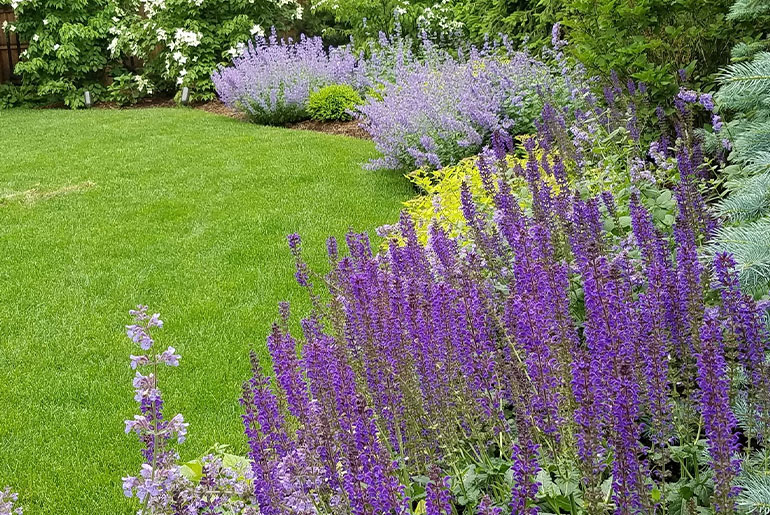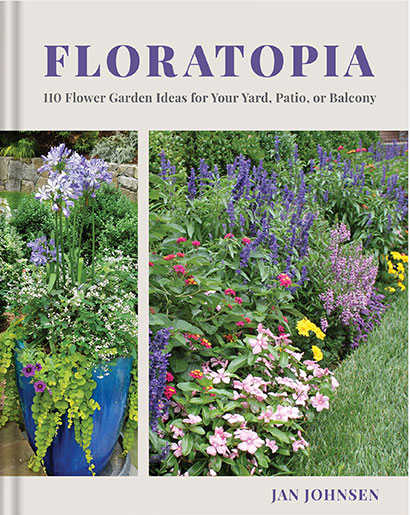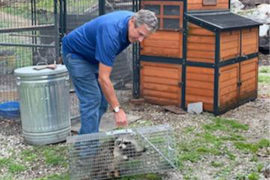Jan Johnsen has always loved plants, particularly flowering ones – not easy when you grew up in the concrete jungle of New York City, a world of “no plants and no lawnmowers,” says the landscape designer, a principal for 35 years in Johnsen Landscapes & Pools in Croton-on-Hudson.
The child of Abstract Expressionist artists — her father studied with Robert Motherwell — Johnsen carved out her own realistic, representational world early on by growing tomato and coleus plants on the family’s fire escape. (Her mother watched in amusement as she once tried to grow corn on a windowsill in vain.)
Still, Johnsen persisted, winning first prize as a student at the High School of Music and Art in the 1960s for her study on the beneficial effects of sound on plant growth. (It turns out the high-pitched sounds of birdsong open the pores of leaves, enabling the plants to grow. “It’s absolutely fascinating,” Johnsen says.)
That led to a full scholarship to Friends World College, a Quaker school with “no classes and no grades” but plenty of centers and internships worldwide that took her to Mombasa, Kenya, for the study of city planning; Osaka, Japan, to work with a landscape architectural firm; and the University of Hawaii, where she earned a degree in landscape architecture.
Johnsen would go on to work with Alain Grumberg, a master gardener from Versailles, at Mohonk Mountain House https://www.wagmag.com/round-the-mountain-to-mohonk/ in New Paltz, where they planted 20,000 flowers from seeds — a real test of a gardener. A stint at a firm in New Orleans, where Johnsen earned a master’s degree in city planning at the University of New Orleans, would follow. So if anyone — anyone — should write a book called “Floratopia,” it should be Johnsen.
“Floratopia: 110 Flower Garden Ideas for Your Yard, Patio, or Balcony” (The Countryman Press, $30, 256 pages) is Johnsen’s fourth book in 10 years, the others being “Heaven Is a Garden,” “The Spirit of Stone” and “Gardentopia.” “Floratopia,” inspired by her 45-year professional love affair with flowers, comes at a time when business is blooming.
“Oh my goodness, the interest in plants and gardens has exploded, thanks to Covid,” she says. Homeowners, she adds, are looking at their properties as the new vacation spots or entertainment complexes or as extensions of their indoors or views to escape into.
“I attribute this to people being home more,” she says. “They used to get up and get on a train. Now they get up and look out their window.”
One thing they should see outside that window — a pot or two of flowers. That’s how Johnsen starts every project. No one visits your house, she says, and remarks on your paving stones. But they will remark, she adds, on some lovely blossoms.
Whether they’re potted or embedded, Johnsen says, the first step is to know what flowers can be planted in this region (as well as which thrive in shade, sun and drought). Despite Johnsen’s childhood experience as a fire-escape gardener, New York City is actually a rich spot for landscaping because, she says, it is the southernmost city for northern plants and the northernmost city for southern plants, having been reclassified as a humid subtropical place, thanks to warming trends. Lower Westchester County has temperatures similar to New York City, as does Fairfield County, with the Long Island Sound serving as a mitigating factor, Johnsen says. Northern Westchester is cooler.
Next, think about your color scheme. Do you want to do beds and gardens each in a different color? Or do you want contrast, as in silver foliage plants like lacy dusty miller offsetting purple summer snapdragon and “Titan Icy Pink” annual vinca (Tip No. 41 in the book)?
You’ll probably want a mix of annuals, like marigolds and New Guinea impatiens, which will give you color into the summer and fall but will have to be planted every year, and perennials, like irises and peonies, which bloom for a shorter period but will come up on their own. And you’ll want to consider deer-resistant plants like spiky, jewel-colored gomphrena globosa, also called globe amaranth, an annual.
If you’re using a pot, make sure it has feet or a stone underneath it for elevation and drainage. If you’re planting flowers in the ground, it’s all about soil, she says. Turn it over and feed it with compost before planting.
Whatever you decide to plant, don’t forget milkweed, herbs and other plants on which pollinators like bees and butterflies thrive. Milkweed is, however, one of many pretty flowers that are poisonous to pets. (See story on Page 90).
But back to pollinators. “The public doesn’t realize how badly in danger we are of losing insects,” Johnsen says, which are necessary for our beautiful floral gardens. She even makes a case for the humble dandelion. Yes, it may be a weed, but it is a beloved food source for bees and butterflies.
So please, don’t pick the dandelions.
For more, visit johnsenlandscapes.com.







Great article. Sounds like a very talented and interesting person